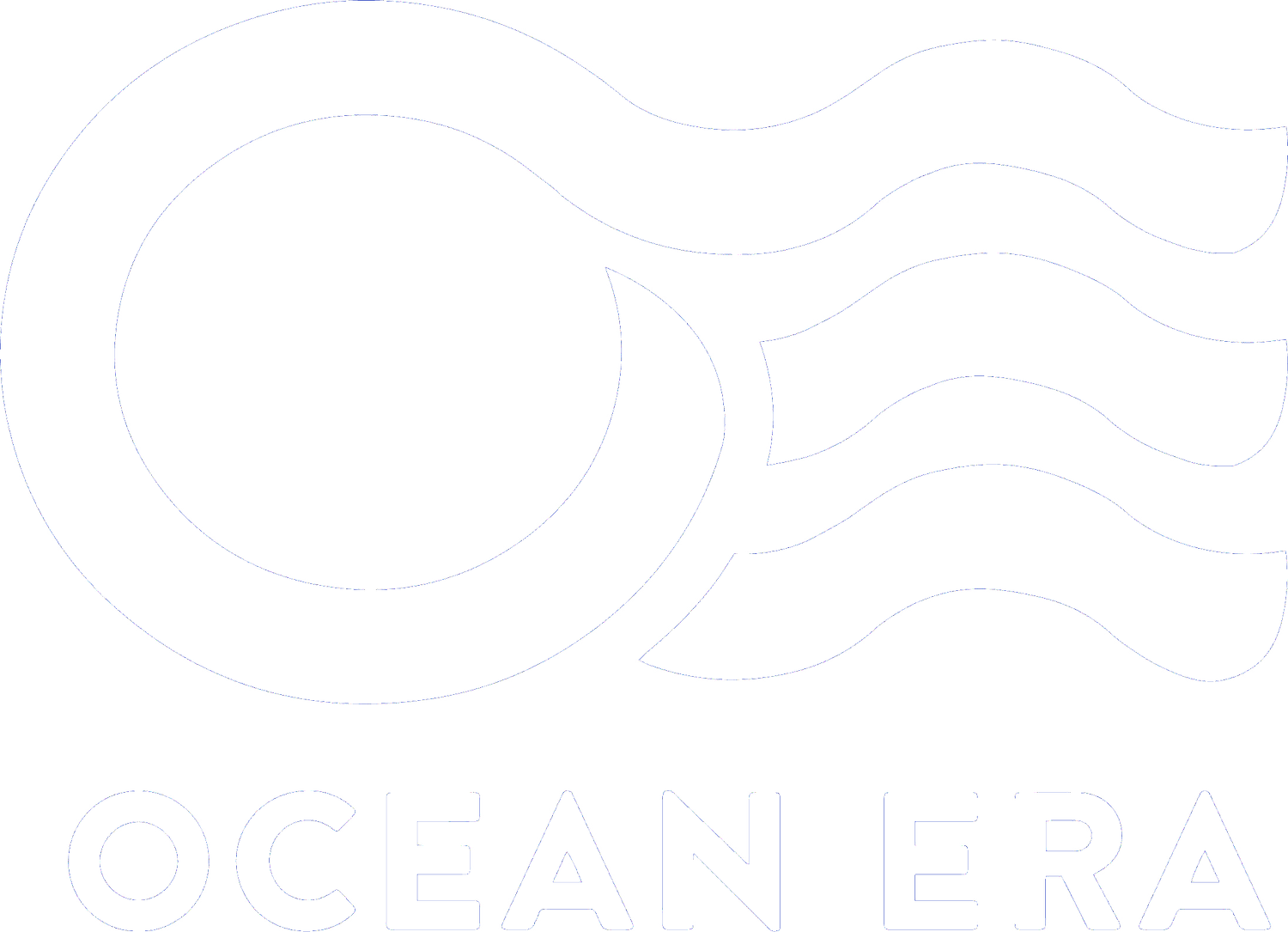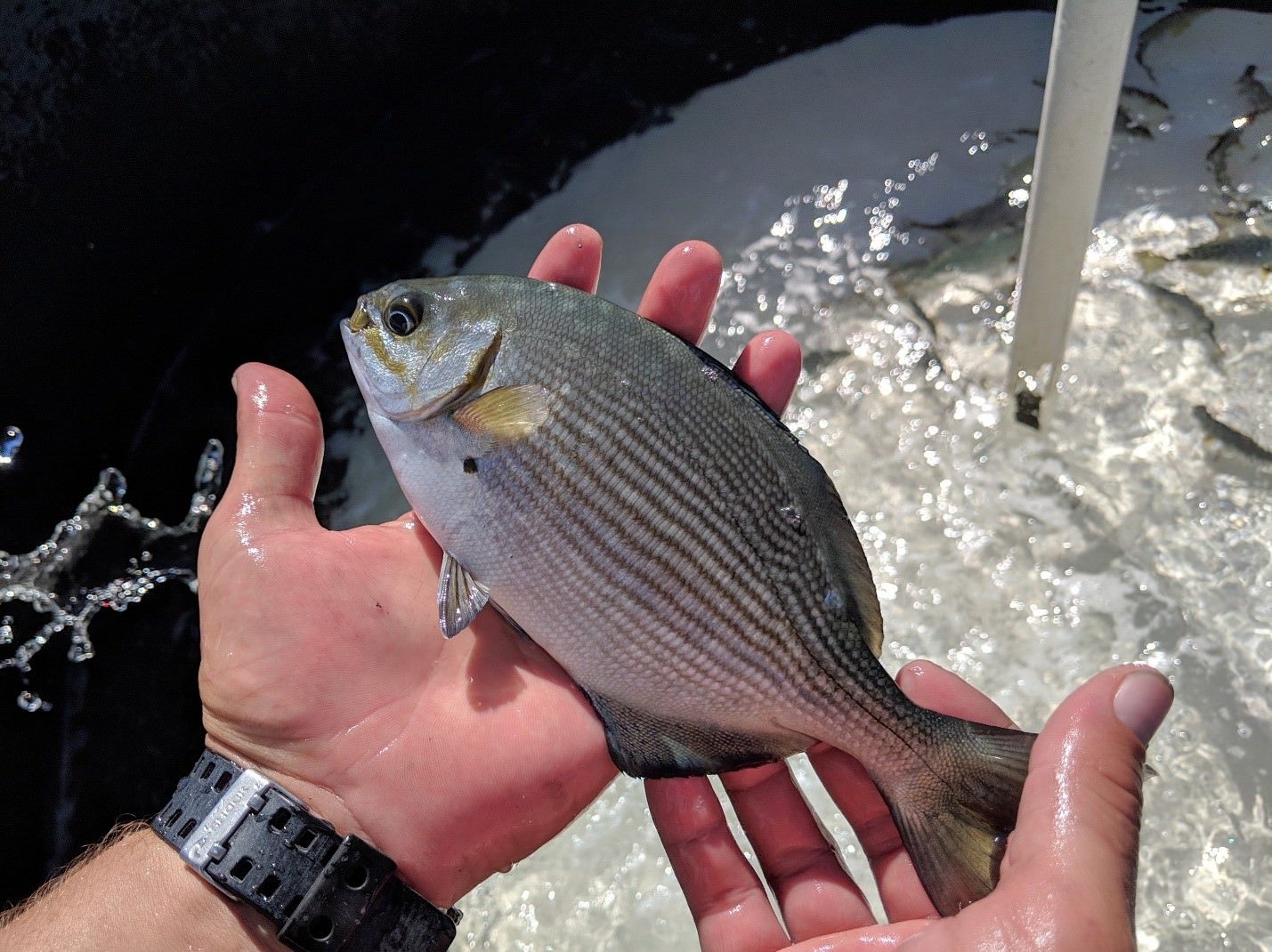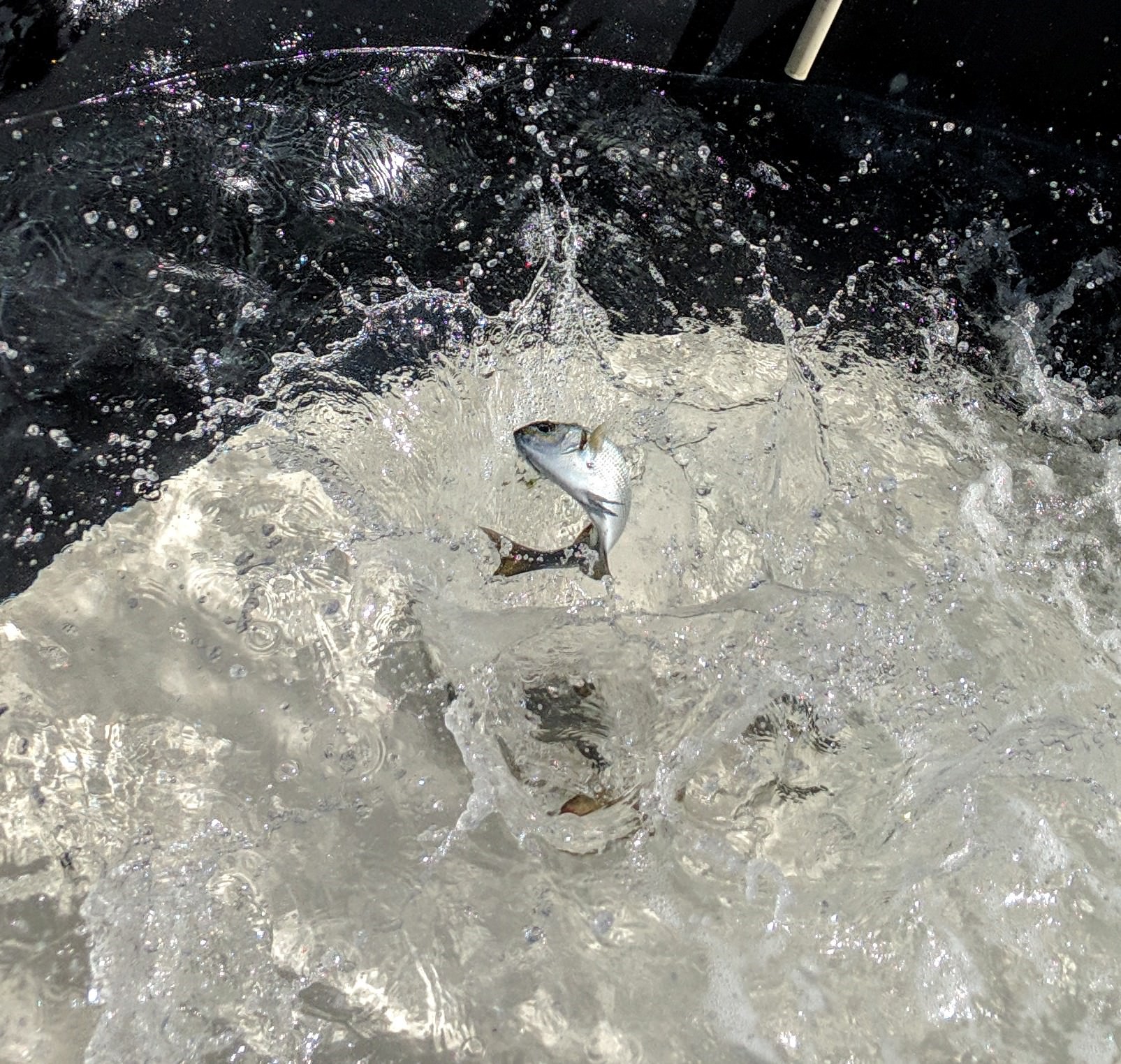Save a tuna, eat a vegetarian
Seafood has a smaller carbon footprint than any other animal protein (Nijdam et al, 2012). But just like every other kind of meat, the higher the trophic level, the higher the energy input to make it.
For seafood, low trophic level typically means filter-feeding bivalves, such as oysters, or forage fish, such as sardines or mackerel. Most consumers will agree that an ahi fillet is more desirable than a plate of mussels or jellyfish. But what if you could have a hearty, satisfying fillet – sashimi-grade for the poke-lovers – that was also an herbivore? Enter Kyphosidae. At Kampachi Farms we have been working with Kyphosus vaigiensis, an herbivorous reef-fish with a longstanding presence in Hawaiian cuisine.
Kyphosid from local Kona waters; a commonly fished for species, popular as poke. He ded.
This fish is known as enenue or nenue in Hawaiian (rudderfish or sea chubs in Not Hawaiian), and in some regions was regarded as a prized reef fish, reserved for ali’i (royalty) only (Ulukua, 2019). Nenue are found in abundant schools around Hawaii; 2-3-kilogram fish are common, while state records exceed 4.5 Kg. One of the traditional preparations for nenue was poke – a staple of native Hawaiian food, originally consisting of raw reef fish, sea salt, limu (seaweed), and kukui nuts. Poke recently exploded onto the mainland United States fast-food scene; it can be found at myriad stand-alone poke counters as well as at the likes of Red Lobster and The Cheesecake Factory (Dixon, 2016). While Hawaiian poke was traditionally made of a variety of fish, including nenue, the versions in vogue now are based almost exclusively on tuna or salmon, two high-trophic predators.
Nenue have a number of advantages as a candidate for aquaculture. Our research at Kampachi Farms thus far has found that adult nenue spawn readily in captivity. Larvae are exceptionally hardy in preliminary hatchery efforts. Our colleague Syd Kraul at Pacific Planktonics recently raised a final total of 200 baby nenuitos from a small sample of our captive-spawns, in an extensive ‘green-water’ culture system. We are planning larger-scale runs in our research hatchery in the near future. Nenue also have ctenoid scales, with a rough texture and row of tiny teeth at the edge; this armor dramatically aids in ectoparasite resistance.
Their most interesting feature, however, is their guts.[1] Nenue have a unique digestive system that allows them to graze on macroalgae. They subsist on seaweeds by using fermentation in the gut to break down the complex carbohydrates of limu. Several rounds of grow-out trials with juveniles have shown that they can thrive on diets based on aquatic plant material as well as corn and wheat. Herbivory precludes the need for wild-caught forage fish – reducing the overall ecological footprint – and perhaps renders them better suited to small-scale fish farming in less-developed countries.
Hand-model displaying juvenile Kyphosus vaigiensis, also known at this stage as nenuito.
26 day-old Kyphosus vaigiensis learning their numbers.
Between ready acclimation to captivity, routine marine fish larval rearing, parasite resistance, and a broad plant-based diet, this fish has all the trappings of success in sustainable aquaculture. And it yields poke-quality meat to boot!
At Kampachi Farms we believe that seafood is healthier for people and healthier for the planet, compared to other types of meat. But one should always strive for improvement: we can improve seafood sustainability by diversifying what we eat and prioritizing low-trophic species in this diversification. Legions of researchers are pursuing plant-based and alternative proteins that can suitably nourish those carnivorous fish the market so demands – a noble pursuit, yet an admittedly roundabout way to produce ‘low trophic’ species. The more direct way, the simpler way, is to culture natural marine herbivores. Not all marine herbivores are suited for the dinner table. And market favorites – such as ahi, snappers, and our King Kampachi – are all beautiful food fish in their own right. However, if even a fraction of the restaurants selling salmon and ahi poke bowls today also offered nenue grown on herbivorous diets, the seas would be that much better for it.
A flippin’ cute nenuito !
References
Dixon, Vince. 2016. Data Dive: Tracking the Poke Trend. www.eater.com. Citing FourSquare.
National Oceanic and Atmospheric Administration. 2018. American seafood industry steadily increases its footprint. www.noaa.gov.
Ulukua: The Hawaiian Electronic Library. 2019. Native use of fish in Hawaii. Mok. 2 Descriptive list of Hawaiian fishes (‘Ao’ao 56-163).
In-text links to…
https://oceana.org/blog/eating-seafood-can-reduce-your-carbon-footprint-some-fish-are-better-others
https://www.sbs.com.au/food/article/2018/02/01/jellyfish-if-you-cant-beat-them-eat-them
http://www.hawaiifishingnews.com/records.cfm
[1] Stay tuned for future blog posts about our imminent research on the kyphosid gut microbiome and its potential application to biofuel production.




